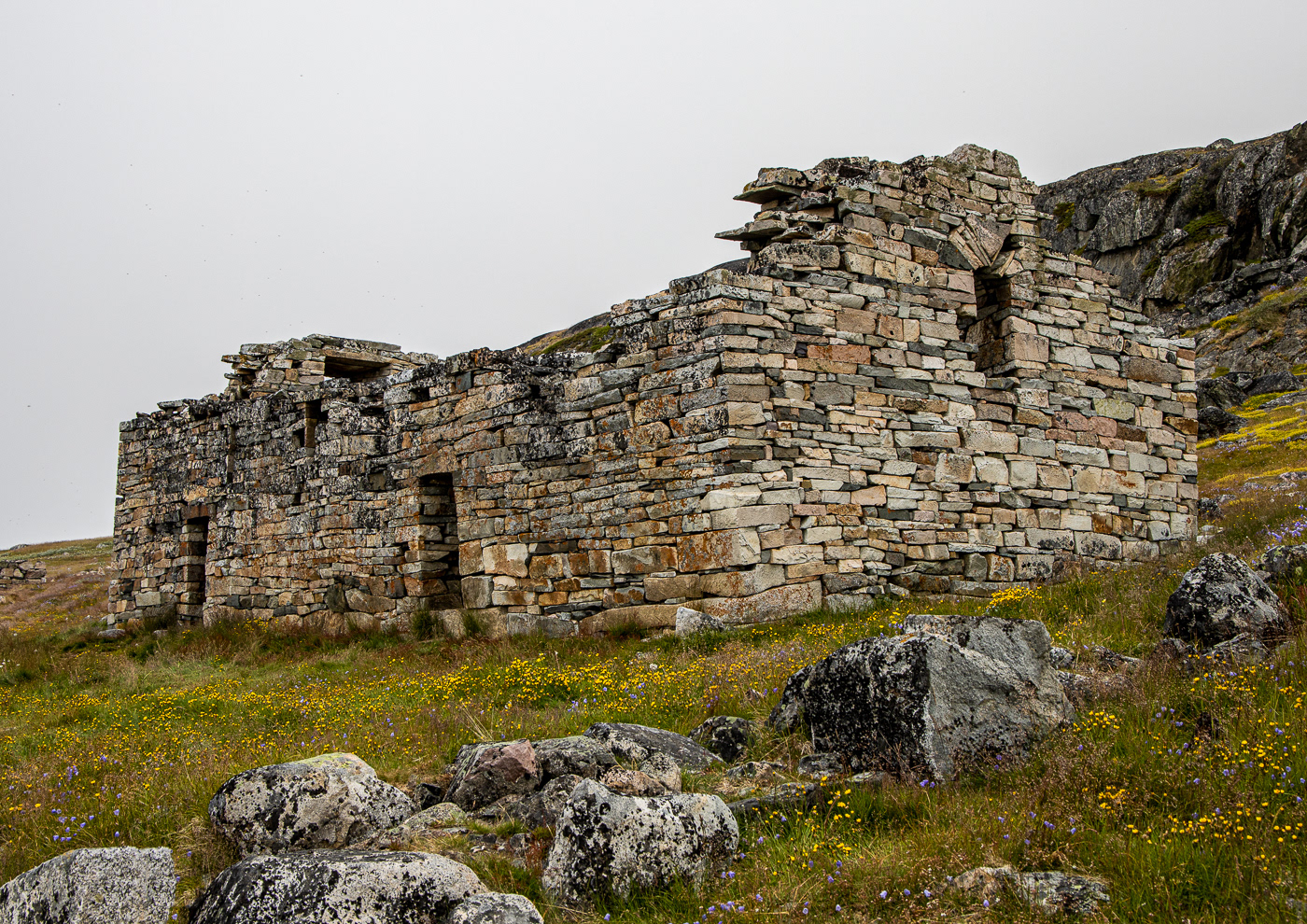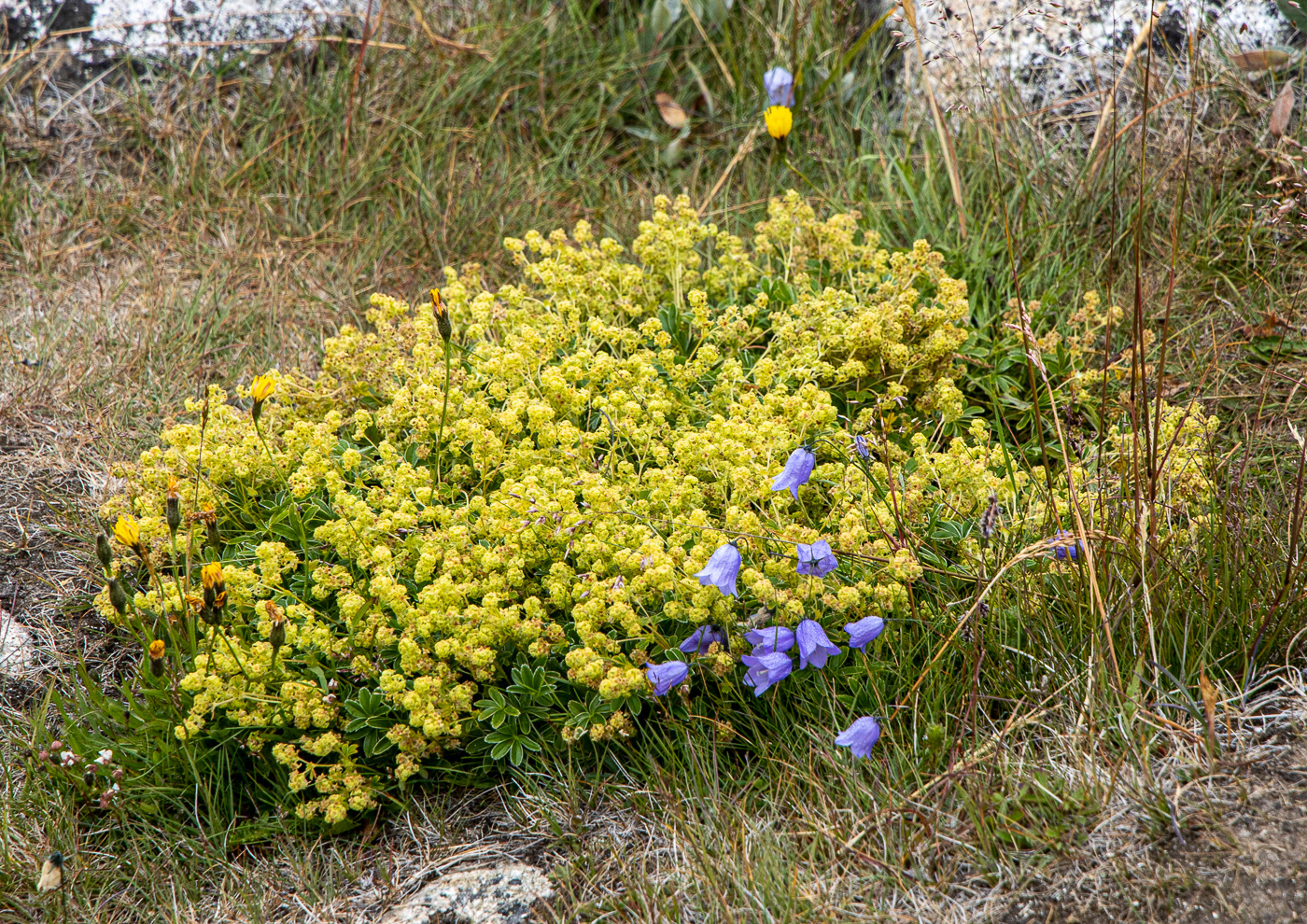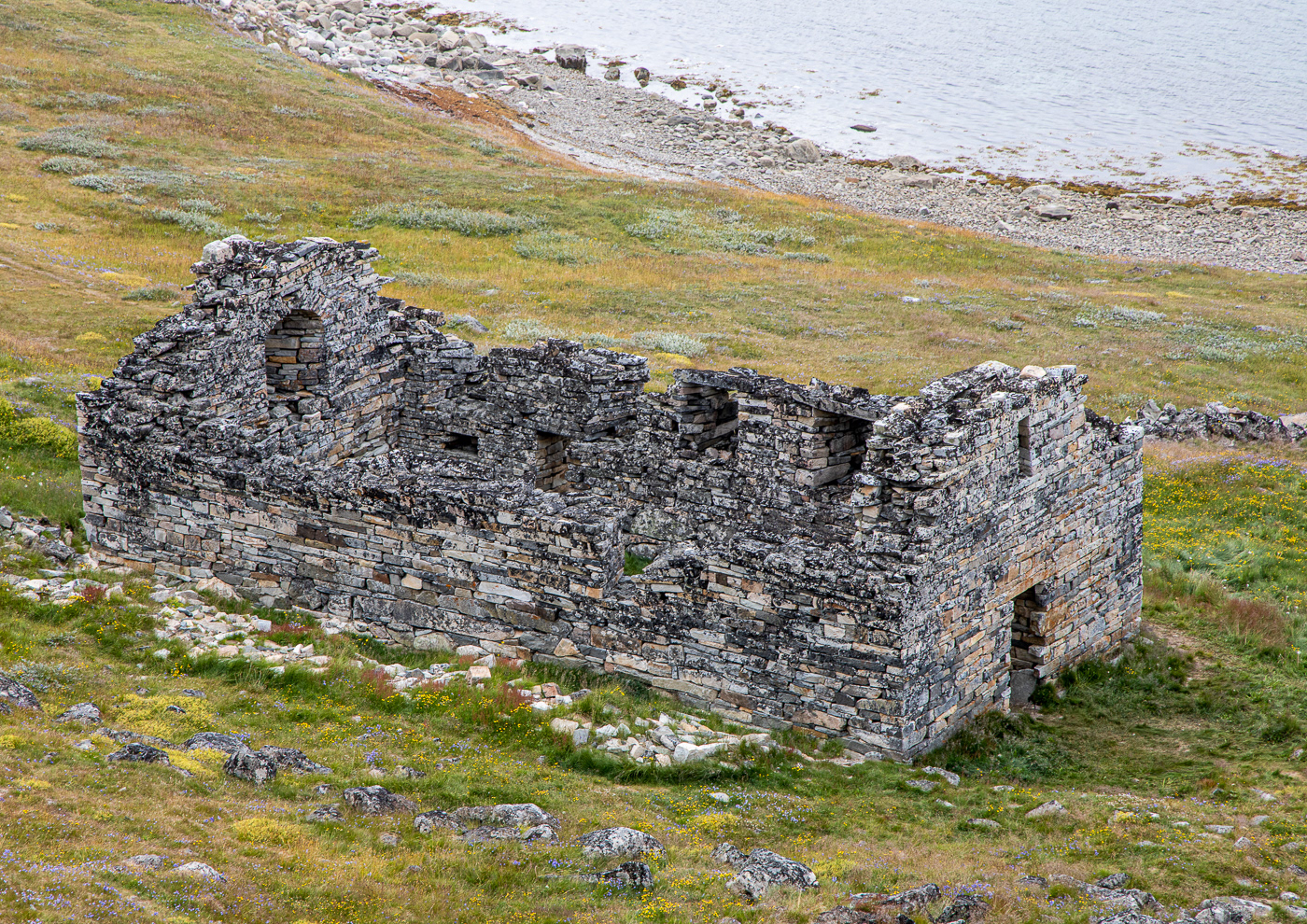Hvalsey is the site of Greenland's largest, best-preserved Norse ruins in the area known as the Eastern Settlement. According to the Icelandic Book of Settlements, the farmstead was established by Erik the Red's uncle in the late 10th century.
The farmstead was a major centre in South Greenland. The site, which has the ruins of two stone great halls, had an additional 14 houses close to a church. The old hall, which is 14 metres long and 3 to 4 metres wide, is in the middle of the ruins. The well-preserved newer hall measures 8 metres by 5 metres.
The church, which was first erected in the early 12th century, might have been built by Scots-Norse stonemasons as similar structures are found in Norway and Orkney. The church might have been maintained due to the site's royal ownership.
The church was exceptionally well built from carefully chosen stones that in some cases weigh in excess of five tons. Its walls, which are up to 1.5 metres thick, measure 16 metres by 8 metres on the outside. The gables rise 5 metres to 6 metres from the floor and may have risen 2 metres higher when first constructed. Side walls, which would have been higher when new, now stand 4 metres. The building was plastered with ground mussel shells and would have been white when in use and was roofed with timber and turf.
A 1408 wedding at the site's church is the last documented event to occur during the Norse settlement of Greenland. Two years later the Icelandic newlyweds returned to Norway before sailing to Iceland and settling on the bride's family farm in north Iceland in 1413. The details were recorded in letters between papal dignitaries in Iceland and the Vatican.
Archaeological evidence shows that over the next hundred years the last Norse settlements in Greenland slowly died out. It was not until 1721 that a joint merchant-clerical expedition led by Danish missionary Hans Egede discovered that the Norse colonies in Southern Greenland had disappeared.
Source: Wikipedia (https://en.wikipedia.org/wiki/Hvalsey)






Erik the Red, a Norse explorer, sailed to "a somewhat mysterious and little-known land" in about 982. When Erik returned to Iceland, he brought with him stories of "Greenland". Erik deliberately gave the land a more appealing name than "Iceland" in order to lure potential settlers. He explained, "people would be attracted to go there if it had a favourable name". His salesmanship proved successful, as many people especially "those Vikings living on poor land in Iceland" and those that had suffered a "recent famine" became convinced that Greenland held great opportunity. In midsummer, Hvalsey is greener than at other times of the year, and wild flowers are abundant. But it must have been poor pickings for the sheep, goats, horses and cattle brought by the settlers.






The church on the left and the newer hall on the right.




The church can just be seen as a tiny ruin the bottom right hand corner of the following image, which shows the magnificent scale of the mountain behind it.